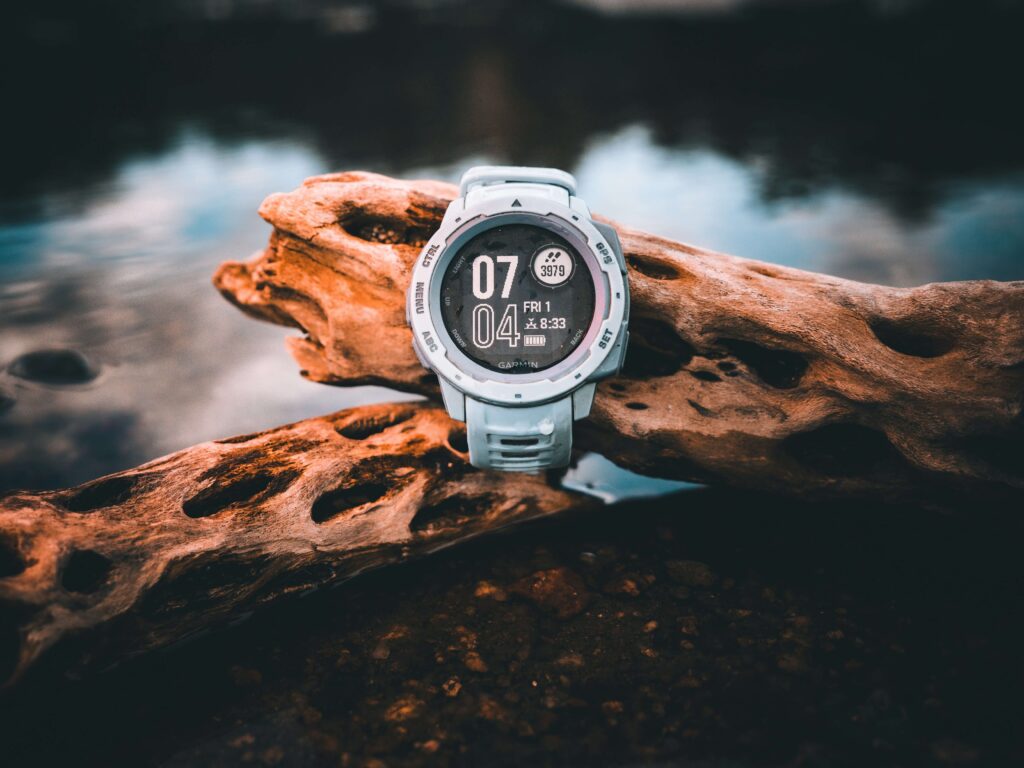Introduction to Heart Rate Training
Heart rate training controls the workout intensity by using your heart rate. It limits your heart rate to a specific range, denoted as a percentage of your maximum heart rate, for a particular time period. The aim of heart rate training is to prepare your aerobic system without stressing your skeletal and muscular systems.
Keeping an eye on your heart rate helps you work out at the right intensity level to accommodate your fitness goals. Choose the heart rate zone based on your goal —- improvement of your endurance, speed, or cardiovascular health.
Understanding Heart Rate Zones
Heart rate training zones are estimated according to your maximum heart rate, the highest heart rate you can reach while exercising.

Resting Heart Rate (RHR)
A normal resting heart rate (RHR) for adults ranges between 60 and 100 beats per minute (bpm). Factors influencing your resting heart rate are:
- Age and health
- Lifestyle factors like exercise, smoking, and alcohol consumption
- Fitness level: Very fit people may have low RHR
- Air and body temperature: Your heart must pump faster on hot days
- Emotions: During stress or excitement, heart rate is higher
- Medications: Beta blockers slow down the heart rate while thyroid medicines increase it
- Time of day: The heart rate slows down at night
- Body position
Resting heart rates the number of times your heart beats in a minute when you sit still for 5-10 minutes. You can measure it by employing any of the following methods:
- Use a watch to count your beats for half a minute and double the number to get the beats per minute.
- Place your index and middle fingers together on your wrist, below the thumb’s fat pad, and feel your pulse. Count the number of beats in 15 seconds and multiply that figure by
Maximum Heart Rate (MHR)
Maximum heart rate is the upper limit of what an individual’s cardiovascular system can handle while exercising. It is calculated by subtracting your age from 220. For instance, If you are 40, your maximum heart rate would be 180 beats per minute. (220-40)
That brings us to different heart rate (HR) zones:
There are 5 heart rate zones. They are:
Zone 1: Very Light (50-60% of MHR)
Zone 1 is basic level exercise. Generally, it is used for warm-ups and recovery. It improves your health and recovers you from exhausting training.
Zone 2: Light (60-70% of MHR)
Zone 2 heart rate zone is an endurance level zone and helps in burning fat.
Zone 3: Moderate (70-80% of MHR)
Zone 3 heart zone enhances your aerobic capacity.
Zone 4: Hard (80-90% of MHR)
Zone 4 works on anaerobic fitness.
Zone 5: Maximum (90-100% of MHR)
Zone 5 is considered very hard and helps with short burst speed training.
3 Benefits of Heart Rate Zone Training
-
Heart rate training is personalized for you
Heart rate training considers your personal demographics like age, gender, and maximum heart rate. Therefore, the training plan is tailored for you. It makes your workout more efficient and effective.
-
Heart rate training helps in quantifying your work
Through heart rate training, you can be sure that you are working hard without getting overworked. As an instance, individuals who are following a low-intensity heart rate training, zone 1 or 2 work well for you. On the other hand, zone 4 or 5 are perfect while practicing HIIT or during the work phase.
-
It improves fitness and performance.
Building endurance is the most important advantage of heart rate training. Tracking the heart rate and maintaining a right range lets you slowly increase the duration of your exercise. It also has cardiovascular health benefits. Regular training strengthens your cardiac muscles and lungs, thereby enhancing the pumping capacity
Creating Your Training Plan
A one-hour session should ideally follow the below-mentioned training schedule:
- 10 minutes: Start with warming up and cooling down (Zone 1)
- 25 minutes: Zone 2
- 10 minutes: Zone 3 training by pushing even harder
- 5 minutes: Zone 4 training
- 2 minutes: Zone 5
- 8 minutes: Slow down and include a 2-minute cooldown in Zone 1
Throughout this training session, you should monitor your heart rate. It will acquaint you with your body’s endurance and ensure that you avoid overworking yourself. That brings us to our next section that talks about the tools to monitor heart rate.
Tools for Monitoring Heart Rate

The tools used to monitor your heart rate are:
- Chest-band devices
Chest-band monitors have the maximum accuracy when it comes to measuring heart rate as they employ electrical detection. These tools measure the heart rate instead of pulse rate. Hence, they are most extensively used.
- Wrist- or forearm-located wearables
These devices are highly accurate while the users are resting or walking. Many of these tools work with great accuracy during running or cycling. It can lead to inaccurate estimation when you use your arms for exercise activities such as with an elliptical that has hand levers for arms. GPS Watches with heart rate sensors are highly effective when it comes to measuring distance, activity, and cardiovascular health.
- Pulse oximeters
Pulse oximeters are attached or stuck to your finger with an adhesive. They help in measuring the oxygen level and heart rate. However, pulse oximeters found in non-medical setups are not used during exercise.
Tips for Effective Heart Rate Zone Training
- Start with warm up and end the workout in Zone 1.
- Always stay hydrated to maintain optimum performance.
- Use devices like heart rate monitors and pedometer watches to track your activity.
- Pay attention to your body’s responses like breathing difficulty or chest pain.
- Keep changing your workout based on your goals and fitness level.
- Set the right expectations considering your heart rate zones.
- Keep tracking your recovery heart rate to measure your cardiovascular fitness.
- Try taking a lactate threshold test to pinpoint your heart rate zones.
Common Mistakes to Avoid
The common mistakes seen in heart rate training are:
-
Missing out on establishing accurate training zones
If you want to train well, perform various sessions at different intensities. Whether it is low-intensity aerobic training or high-intensity anaerobic workouts, focus on every aspect of the training. Use a heart rate monitor to make sure that every session is performed at the right intensity.
-
Failing to re-test at regular intervals
If you are an amateur, your thresholds and zones will keep changing. Therefore, it is important to check your zones at regular intervals. Accordingly, you should adapt and change your plan. Not re-testing yourself will put you at a risk of spending more time training in the wrong zones.
-
Depending on HR during short intervals
On increasing your training pace, your heart rate will not instantly reach that level. While practicing a speed session made up of intense short intervals, regulate your intensity during the intervals by using perceived exertion or pace.
-
Comparing your heart zone to other people
Every person has a variable heart rate profile according to their age, level of fitness, and genetic constitution. It is, therefore, a futile thing to compare your heart rate to other people. Your performance and how your heart rate changes with training are the things that matter the most.
-
Relying heavily on your heart rate monitor
Heart rate monitor helps in determining how hard a person should work in a training session. At times, your heart rate rises above the prescribed zone. However, if your perceived exertion feels right, you need not worry.
Conclusion
Heart rate training zones serve as a tailored roadmap for working out. It helps ensure that every session matches the client’s objectives. As it builds tailored programmes, it takes the fitness levels to the next level and prevents overtraining. It has helped personal trainers enhance the client’s fitness journeys and deliver impressive results for them.
FAQs
1. Does our heart rate affect how fast we can run?
Yes, heart rate can affect your running speed. In case your heart rate is too high, you may need to slow down as it can pose a threat to your life. On the other hand, low heart rate means that you can increase the intensity of your activity.
2. Why does your heart beat faster at a high altitude?
As the air is thinner at high altitudes, your lungs receive less oxygen and your body needs to work harder to pump oxygenated blood to the rest of your body. Consequently, it makes your heart beat faster as a compensatory mechanism.
3. How does the human body adapt to regular running?
The human body adapts to regular running in the following ways: 1. Running enhances cardiovascular stamina, reducing the demand on the lungs. It lets your body use energy more efficiently. For running shoes, you can explore our collection here. 2. It makes lower-body muscles stronger. Muscles also adapt by increasing the density of mitochondria. 3. Bones adapt to improved loading with time. 4. Through regular running, you can sleep better and rest well.